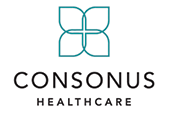At work, slips, trips, and falls occur more than one might anticipate. This often leads to injuries like cuts, bruises, and fractures. The most common contributing factors point to wet and slippery floor surfaces, poor lighting, unsuitable footwear, and unstable walkways.
Raising this safety topic for work will alert your employees on the most common slip, trip and falls hazards and how to avoid them by understanding where and how they can occur.
SLIPS– Slips are the result of slippery surfaces which can occur for numerous reasons. Examples are weather, leaks from water sources, spills, worn down or uneven surfaces, and inappropriate footwear.
Footwear: Are your employees wearing appropriate non-slip footwear? If not, you may want to review your policy on uniform requirements to include non-slip footwear and institute a Shoes-For-Crews program.
TRIPS– Trips occur whenever your foot hits an object or uneven surface, and you are moving with enough momentum to be thrown off balance. Trips are usually the result of inattention when an employee is in a hurry or due to inappropriate floor mats/ rugs or footwear. The stairs are treacherous. Consider having no slip grips placed on stairs and keeping carpet on stairs well maintained. REMIND staff to use the handrails when going up and down stairs and to not carry objects that prevent the staff member from using the handrails.
FALLS– Falls occur whenever you move too far off your center of balance. Falls account for more workplace fatalities than any other injury. All employees should be trained in the appropriate use of stepladders or ladders. Confirm that stepladders are available to staff in all departments to avoid standing on inappropriate structures, such as bathtub edges, furniture, or chairs.
Common hazards in the workplace:
- Wet floors
- Dry floors with dust or power
- Uneven walking surfaces
- Polished or freshly waxed floors
- Transition from one floor type to another
- Uneven floor tiles
- Damaged or irregular steps; no handrails
- Sloped walking surfaces
- Weather – rain, sleet, ice, snow, hail, or frost
- Wet leaves or pine needles
Always be aware of slip, trip and fall hazards and follow precautionary steps to minimize and eliminate the risks.
For more resources on Fall Prevention, check out https://www.standstrongwa.org/. This site is a collaborative project funded by the state and provides education and resources for caregivers, residents/patients, and family/friends/supporters. The site was recently launched and more information will be added soon.
Questions regarding LeadingAge Washington’s Group Retro program, contact:
- Scott DeHem, Vice President of Claims, Comprehensive Risk Management/Risk Finance, scott@riskfinance.net
- Jodi Pena, LeadingAge WA Staff, JPena@LeadingAgeWA.org




